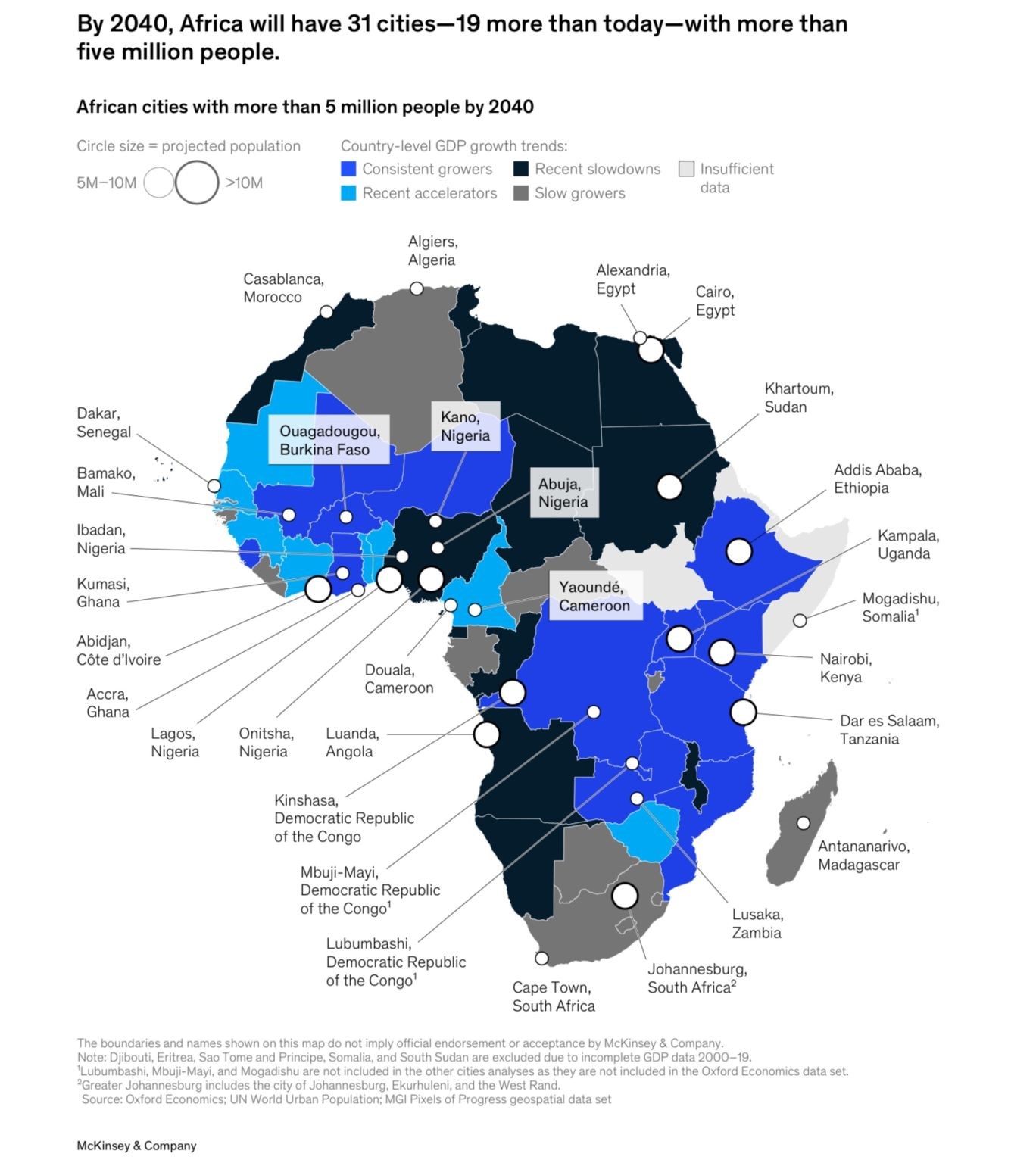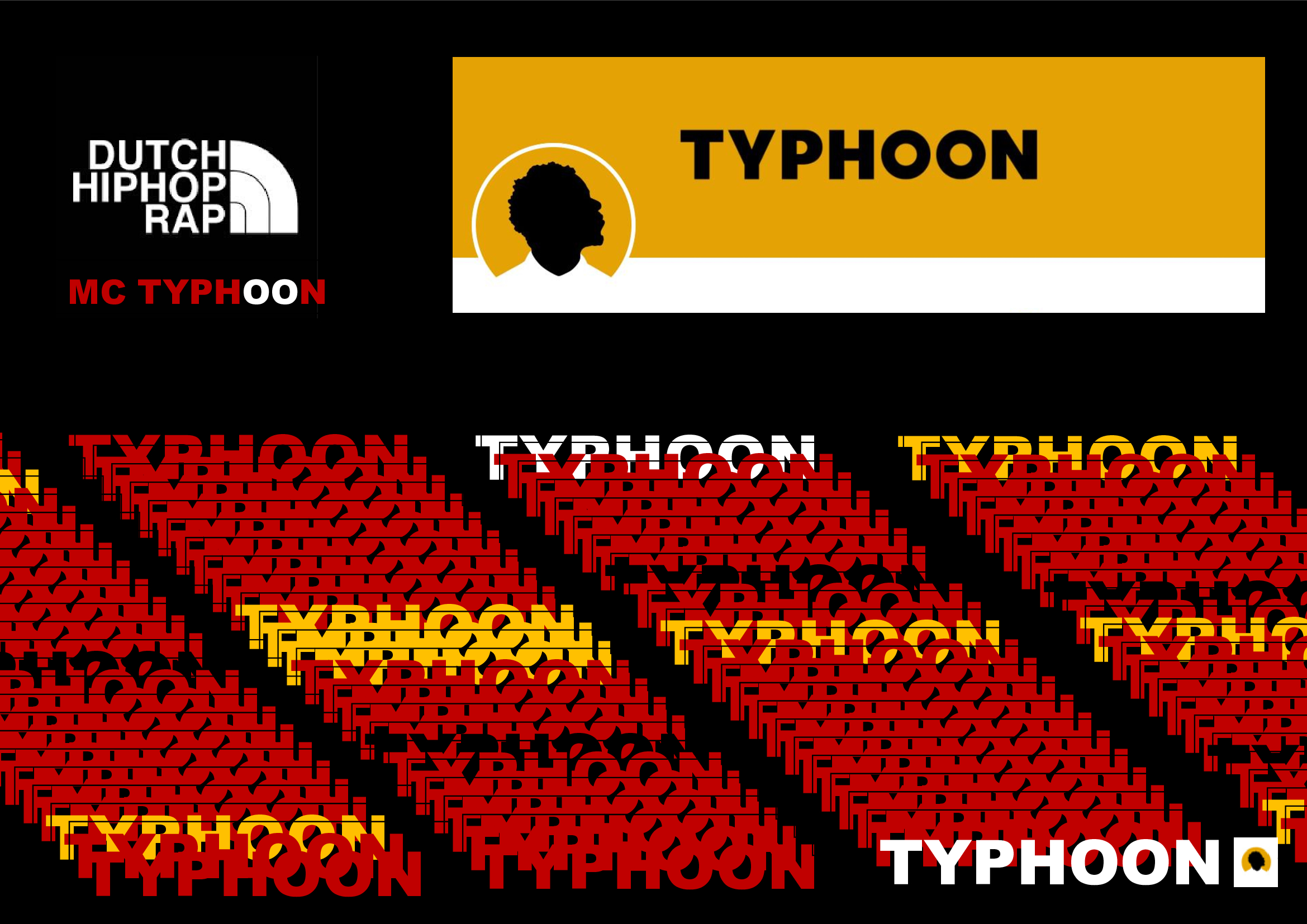-
AutorPublicaciones
-
-
The Future of
Urbanization in
Africa: A Surge in
Population Growth
and Infrastructure
Needs by 2040.

Introducción:
Africa is undergoing an unprecedented phase of urbanization, positioning itself as the world’s fastest urbanizing region. A new report forecasts that by 2040, Africa will have 31 cities with populations exceeding five million, a dramatic increase from today’s 12 cities. This rapid urbanization represents both a challenge and an opportunity for the continent, as cities are expected to drive economic growth while struggling with infrastructural demands. This article explores the implications of Africa’s urban expansion and the essential investments needed to support this transformation.
The Current State of African Urbanization.
Africa’s urbanization trajectory has already been set in motion, with the continent’s urban population growing at an annual rate of 3.7% since 2000. Despite this significant urban growth, Africa remains predominantly rural, with 57% of the population living in rural areas as of 2019. However, this rural dominance is expected to reverse over the next two decades. By 2040, more than 500 million people are anticipated to migrate from rural areas to cities, making Africa majority urban for the first time in its history.
This rapid urban migration will elevate Africa to the global forefront of urbanization, creating the largest total number of urban dwellers in the world. The implications of this shift are profound, as urban centers will increasingly become the engines of economic, social, and technological transformation.
The Growth of African Cities: From Primary to “Second” Cities.
By 2040, Africa’s urban landscape will be drastically reshaped, with 12 cities projected to surpass populations of 10 million people, joining the ranks of Cairo and Lagos, which are already home to more than 10 million residents. In addition to these primary megacities, 19 “second” cities, each with populations between five and ten million, will emerge across the continent. These second cities are set to become crucial hubs for commerce, culture, and innovation, serving as important counterweights to Africa’s current dependence on a few primary cities.
This shift will likely diversify economic opportunities, spreading growth more evenly across the continent. While primary cities like Lagos and Cairo have historically concentrated economic activity and resources, the rise of second cities will help distribute the urban population and create new growth poles. However, this transformation also introduces significant challenges related to infrastructure, governance, and the equitable provision of services.
Infrastructure Challenges and Economic Growth.
As urban populations grow, the pressure on existing infrastructure—such as transportation systems, energy grids, housing, and public services—will intensify. Many African cities currently struggle with inadequate infrastructure, which hampers economic productivity and reduces the quality of life for residents. Without significant investments in urban infrastructure, cities will face increasing challenges in accommodating growing populations and supporting business activity.
In particular, both primary and second cities will require substantial investment in transportation networks to ensure efficient mobility for workers and goods. Public transportation systems, roads, and airports will need to expand to keep pace with the demands of millions of new urban residents. Similarly, energy infrastructure will need to be upgraded to support industrial activity, digital connectivity, and residential energy use.
Water and sanitation systems are another critical concern. Urban centers will need to address water supply and waste management, as rapid population growth can overwhelm existing facilities, leading to public health crises. Addressing these needs will be crucial to improving living standards and enabling cities to become competitive on a global scale.
The Role of Cities in Africa’s Economic Future.
Urbanization, if managed effectively, offers Africa the potential for rapid economic growth. Historically, cities have been centers of innovation, production, and trade, and Africa’s cities are no exception. The growth of urban populations will create a large labor force and consumer base, providing significant opportunities for businesses. Urban agglomerations, where firms and workers are concentrated in close proximity, often generate higher productivity due to economies of scale, better access to markets, and improved innovation networks.
However, for Africa to fully capitalize on the potential of its cities, both primary and second cities must be equipped with the necessary infrastructure and regulatory environments to foster growth. Investment in education and workforce development will also be critical to ensure that urban populations are prepared to participate in a dynamic and evolving economy. Cities that can attract skilled labor and foster technological innovation will emerge as regional and global leaders in various industries.
Conclusion.
Africa’s urbanization presents a transformative opportunity for the continent to achieve sustained economic growth and development. By 2040, with 31 cities boasting populations of over five million, Africa’s cities will increasingly become the drivers of economic, social, and political change. However, to fully harness the benefits of urbanization, African governments and international partners must invest in the infrastructure needed to support this growth.
By addressing critical needs in transportation, energy, water, and sanitation, African cities can become engines of productivity and innovation, ultimately improving the lives of millions of people. The future of Africa lies in its vibrant cities, and the coming decades will determine whether the continent can rise to the challenge of urbanization and unlock its full potential.
-
-
AutorPublicaciones
Debes iniciar sesión para responder a este tema.









